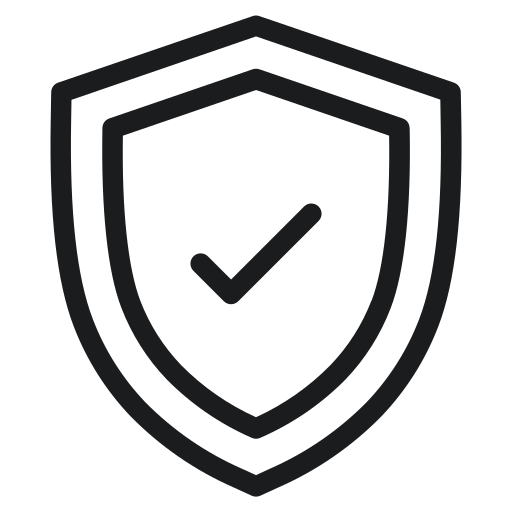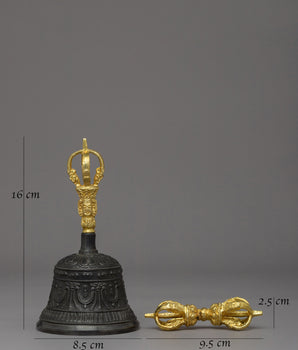A Daily Companion for Mindfulness, Energy, and Awakening
The world is full of noise and turbulence, and many people want a more substantial anchor like the Vajra Pendant. The Vajra, grounded in over two thousand years of Eastern traditions, provides such an anchor, indestructible truth, and the potential for transformation offered through wisdom. The Vajra is steeped in the philosophy of both Hinduism and Buddhism. It is associated with both the unbreakable when thought of as a symbol of truth and the transformative quality of wisdom when worn as a Vajra Pendant. This isn't just a great piece of costume jewelry; rather, it is a spiritual tool that can engage you daily. This pendant carries centuries of sacred meanings. It serves as a reminder of your underlying power, mental clarity, and capacity for awakening. It can stabilize your mind, anchor your energy, and align your intentions with a deeper awareness of the spiritual life. The Vajra Pendant holds sacred meaning close to your heart, whether you are meditating, working, or moving through your day.
The Vajra: Diamond Thunderbolt of the Soul

The Vajra is a powerful symbol and sacred item with roots in ancient Indian and Tibetan spiritual traditions. The word Vajra is Sanskrit for "thunderbolt" and "diamond", two apparently opposite but deeply connected ideas. As a diamond, it represents the characteristics of indestructibility: unbreakable, enduring, and compassionate. With its thunderbolt aspect, it signifies an unstoppable force, a flash of energy cutting through darkness and illusion.
In Hindu mythology, the Vajra was famously used by the god Indra, king of the heavens, as a weapon to destroy ignorance and chaos, an idea I found appealing. Eventually, this object was fully appropriated by Buddhism and, specifically through the Vajrayana Tantric school of Buddhism, began to develop a much more complex and esoteric meaning.
In Buddhism, the Vajra (Dorje) is not merely symbolic but a vital ritual tool used in ceremonies and meditations. The Vajra is in the right hand and signifies the masculine principle of compassion, power, and skillful action (upaya), while in the left hand is the bell (ghanta) symbolizing the feminine principle of wisdom, intuition, and emptiness (sunyata). The Vajra and bell together represent the union of wisdom and method, which is a core aspect of Vajrayana Buddhism. Both are necessary for enlightenment. Wisdom without compassion can be misguided; compassion without wisdom can be cold; but together they are the way of skilled, awakened action in the world.
The Symbolic Richness of the Vajra Design

A traditional Vajra is not merely artistic; it is an expression of sacred geometry, bringing meaning, knowledge, and teachings of the spirit. Every curve, angle, and detail in the Vajra design has been conscious and corresponds to deep truths about the universe in which we live and our journeys of inner transformation.
Anatomy of the Vajra
1. Sphere – Emptiness (Sunyata):
At the core of the Vajra is the sphere. The sphere denotes the ultimate nature of reality, pure emptiness with no image or ego. The sphere is a reminder that everything emanates from and returns to this vast, formless, pure emptiness.
2. Lotus petals – Spiritual awakening:
We have petals or lotus designs surrounding the sphere. They represent the journey of the soul from the mucky waters of duality and confusion to the awakened state of clarity and enlightenment.
3. Five spokes or prongs – Five Wisdoms:
Each prong signifies one of the Five Wisdoms that correspond to the five underlying mental afflictions, which we must transform:
- Ignorance → Mirror-like Wisdom
- Anger → Wisdom of Clarity
- Pride → Equality Wisdom
- Desire → Discriminating Wisdom.
- Envy → All-Accomplishing Wisdom
The Five Wisdoms are not just abstract philosophical objectives; they are inner transformations every practitioner must undergo on their journey to awakening.
4. Makara Head (Mythical Sea Creatures) – Fearlessness:
These mighty ancient mythical sea creatures are depicted near the prongs, are guardians of the sacred and represent the courage to face and go beyond illusion.
5. Perfect Symmetry – Balance and Harmony:
The symmetrical shape of the Vajra represents cosmic order, a balance of opposing forces: form and emptiness, wisdom and method, masculine and feminine, heaven and earth.
The Deities Associated with Vajra
In Vajrayana Buddhism, the Vajra is not only a ritual object but a holy extension of enlightened activity that is embodied in powerful deities and spiritual protectors. These deities do not merely carry the Vajra as an ornament; they represent the Vajra's activity, showing us how wisdom, compassion, and spiritual power manifest as form.
Vajrapani: the Buddha Protector

Vajrapāṇi, "Vajra in the Hand," is one of the earliest and best-known protectors in Mahayana and Vajrayana Buddhism. He is depicted with a muscular body surrounded by flames, holding the Vajra straight out like a weapon. This illustrates his function as a wrathful protector using the Vajra, with its thunderbolt energy, to destroy ignorance and cut through our inner enemies as he protects the Dharma.
Vajrapāṇi stands as a protector and conceptualizes the dynamic power aspect of enlightenment, alongside Buddha, Avalokiteśvara (compassion), and Manjushri (wisdom). The three deities represent Hinduism's mind and heart. They will be on the Buddhist path, each as part of a whole.
Vajrasattva: The Essence of Purity

Vajrasattva, or "Diamond Being," is a significant figure and a powerful aid in the purification practices of Tantric traditions. Traditionally depicted in serene meditation holding a Vajra at his heart and a bell at his thigh, which represents the interdependence of wisdom and method. In various Buddhist traditions, Vajrasattva is a force used in mantra recitation and other visualization meditative traditions to reduce karma, cleanse the mind, and clear mental and spiritual obstacles.
His Vajra is not a weapon of war and violence. Still, it rests gently against his chest as a symbol of compassionate purity, inner healing, and the unwavering clarity of the mind of an enlightened one.
Padmasambhava (Guru Rinpoche): The Master of Tantric Power

Padmasambhava, known as Guru Rinpoche, is instrumental in bringing Vajrayana teaching to Tibet. Across his many iconographic forms, he is very often shown holding a five-pronged Vajra, displaying both the mastery of Tantric energies, as a powerful Vimala or spiritual warrior, and transmuting destructive forces into enlightenment.
The Vajra held in Padmasambhava's hand represents not only raw energy power, but the skillful expression of energy grounded by realization, wisdom, and compassion. It acts as a key symbol of his enlightened activity and presence in both the seen and unseen realms.
Ritual Usage of the Vajra: The Union of Wisdom and Compassion
In Vajrayana Buddhist practice, the Vajra and bell (ghanta) are utilized together in rituals and meditations to signify the profound union of wisdom and compassionate action, a core teaching of the tantric path. The Vajra is held in the right hand, representing the masculine aspect of skillful means, dynamic energy, and enlightened activity. In contrast, the bell is held in the left hand, representing the feminine aspect of transcendent wisdom, intuition, and the formless aspect of reality. Their pairing together represents more than an abstract nature; it represents an inner balance that every practitioner needs to forge in their practice and understanding: action rooted in wisdom, and wisdom articulated in compassionate action with the phenomena of the world. Without the union of these two, spiritual practice remains fractured. Wisdom without action is disembodied, and action without wisdom is misguided. The Vajra and bell serve as a guide for how to codify our agony and pleasure into fully awakened existence, when clarity and compassion effortlessly stream forth together.
Materials For Making Vajra Pendants

The Vajra Pendant is more than a piece of jewelry; it is a sacred object that is often made with a specific intention and spiritual meaning. These traditional styles of pendants are typically handmade by artisans in Nepal, Tibet, and India using particular materials that were selected for their energetic properties and spiritual symbols, along with ritual significance. Some of these materials give unique dimensions to the pendant, so they are worn as meaningful talismans to be worn close to a person's heart.
|
Item |
Spiritual Meaning |
|
Brass / Bronze |
Grounding and stabilizing energy. Commonly used in traditional Himalayan crafts. |
|
Copper |
Enhances energy flow, believed to conduct spiritual vibrations and balance the chakras. |
|
Silver |
Associated with purification, lunar energy, and clarity of emotions. |
|
Gold |
Symbol of illumination, divine protection, and higher consciousness. |
|
Bone |
Used in and symbolize impermanence |
|
Crystal / Quartz |
Amplifies spiritual energy and enhances clarity in meditative focus. |
Wearing the Vajra: Who It's For and Why It Matters

The Vajra Pendant is more than for spirituality; it's a talismanic, deeply personal companion for people following a conscious path, having energy that connects with a diverse audience looking for balance, insight, and inner strength, no matter what form their day may take.
1. Spiritual Seeker & Meditator
Wanting a tangible representation of their spirituality, the Vajra is a grounded connector of daily practice and inner reflection.
2. Yoga Practitioners
Practitioners who enjoy the spiritual aspects of Eastern philosophies, the Vajra symbolizes the union of form/formlessness, much like in many forms of yoga.
3. Mindfulness, Energy Healing
Those who involve themselves with subtle energy, chakras, or holistic healing will resonate with the Vajra's grounded presence that supports alignment of intention to awareness.
4. Symbol Lovers
People who enjoy jewelry with meaning (not just beauty), history, and depth will recognize the Vajra Pendant as a powerful statement of inner values.
5. Anyone who is in a Process of Transformation
Whether you're new to spirituality or have spent years practicing, the Vajra Pendant can serve as a daily memento to inner strength, clarity, and purpose.
Making the Vajra a Living Part of You

- Meditate with it by wearing or holding the pendant to ground your energy and awaken your clear awareness.
- Set an intention each day by touching the pendant in the morning and silently resonating with the qualities in you that are clear or compassionate.
- If you practice mantra, use the pendant while chanting mantras like “Om Vajrasattva Hum” to deepen your spiritual focus.
- Active-Engaged Energy Work: Use the pendant by placing it near your heart or the third eye. This will help support your chakras and energy field.
- Wear it to remind you to be calm, aware, and connected in your day-to-day activities.
Conclusion: A Daily Anchor for the Spirit
The Vajra Pendant is a spiritual ally, bringing you back to center in our modern timeframe that resonates with wisdom from the Himalayan and tantric traditions. It is a powerful reminder to lean into our resilience and innate, precise, compassionate nature so that we may awaken to our potential - entirely and fully. The deep symbolic gesture of the Vajra, known as the diamond thunderbolt, is a vivid reminder of our inner clarity and strength. Your pendant converges with the Five Wisdoms, fierce protectors, and balance of wisdom in action. To wear your Vajra Pendant is to consciously choose to be awake, have purpose in your path, and to be present in a world of distractions. It reminds you of the truth, which is that power lies with clarity, compassion, and being aligned with the highest self. The Vajra Pendant is with you at the beginning of your spiritual journey, or you find it later at advanced stages, it is forever a steady anchor as your evolving spirit, a timeless companion for a timeless path.
Explore Our Vajra and Vajra Pendant Collection from Evamratna.












